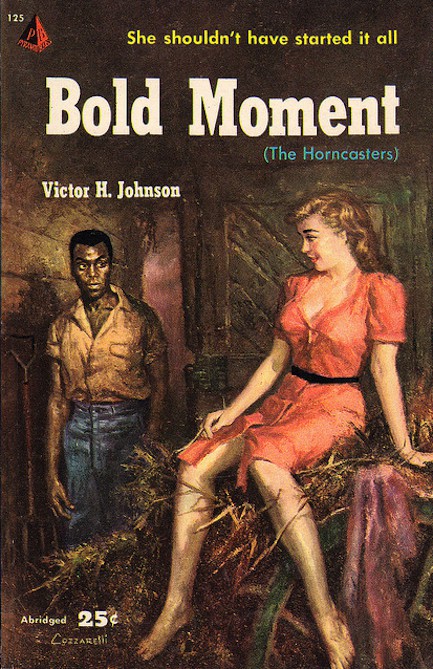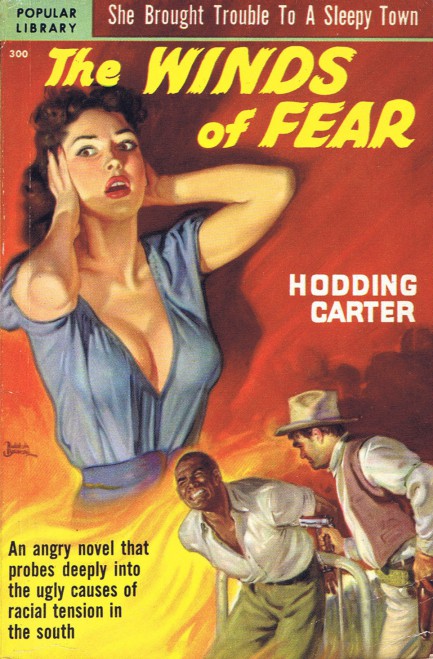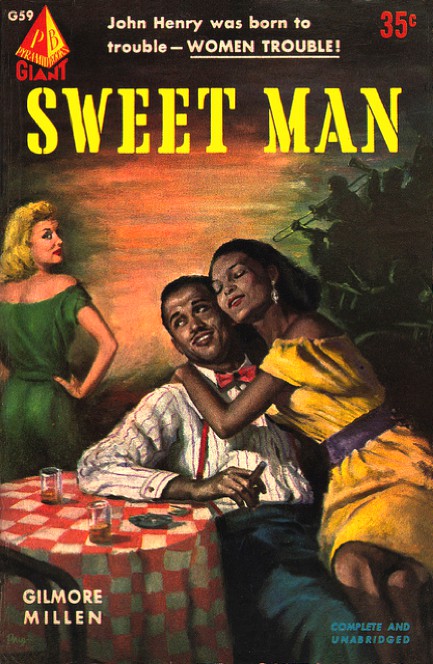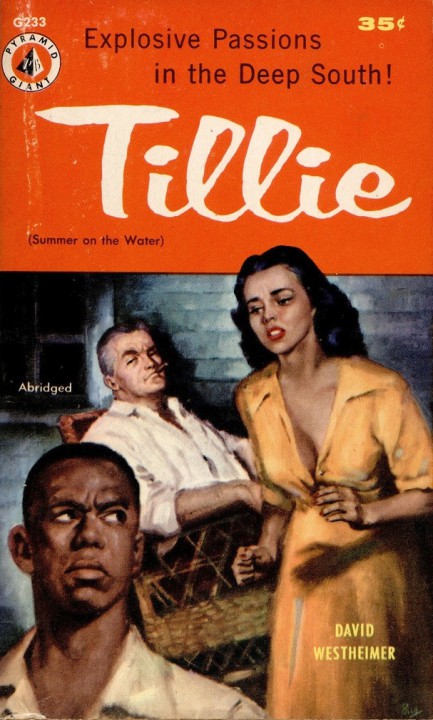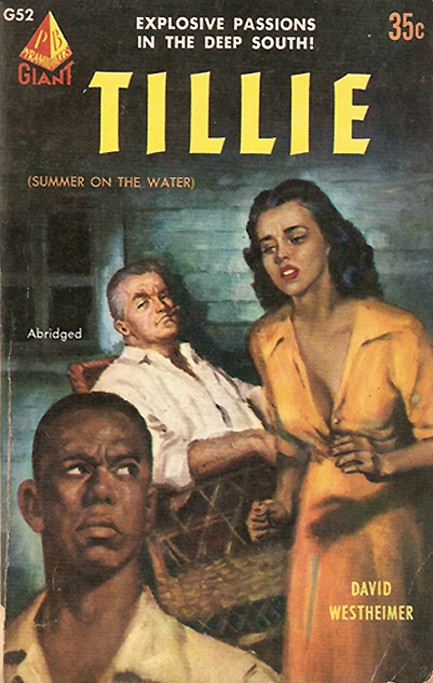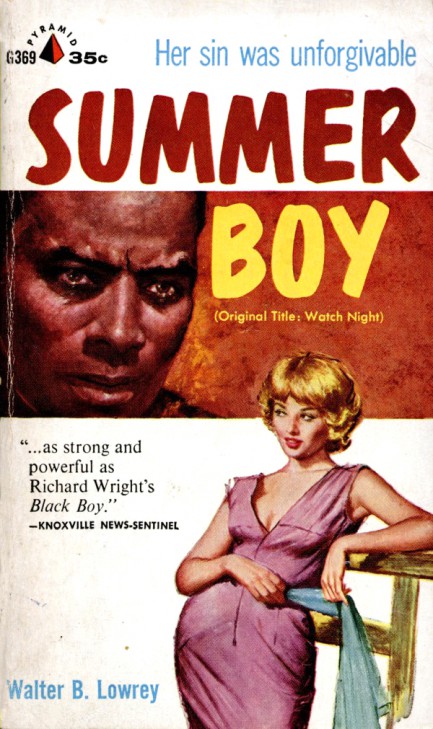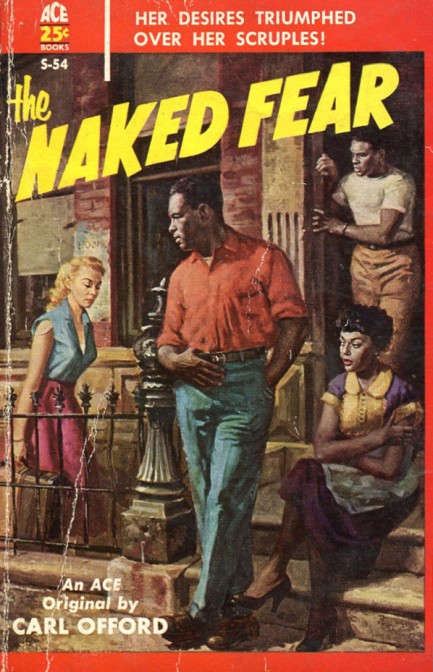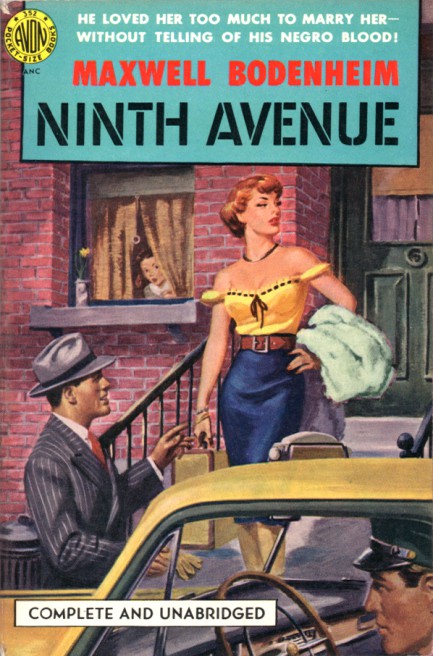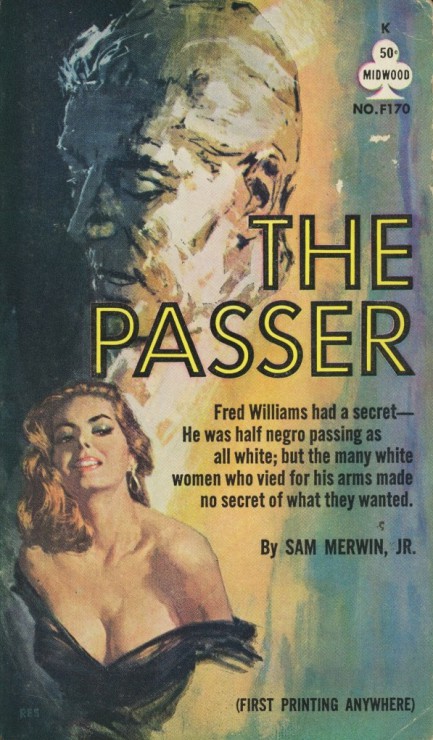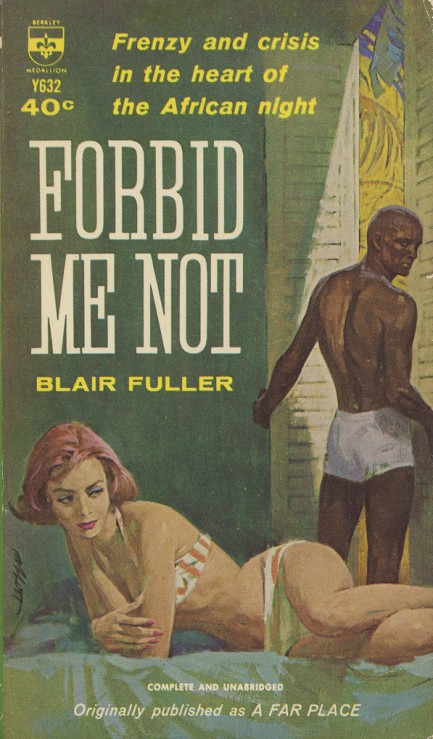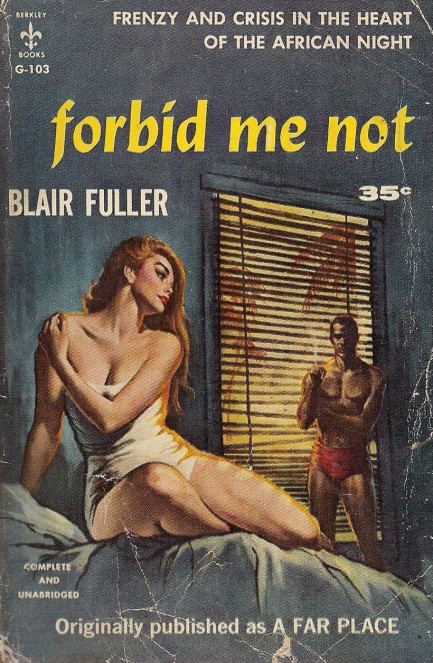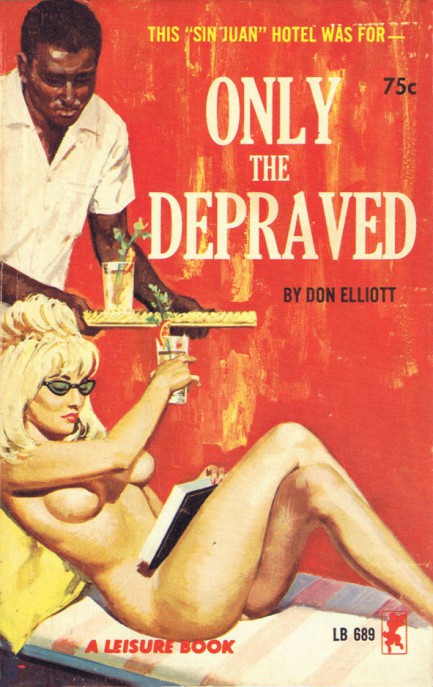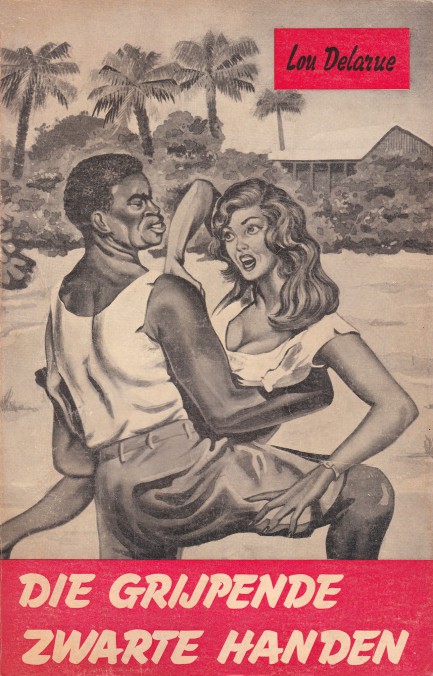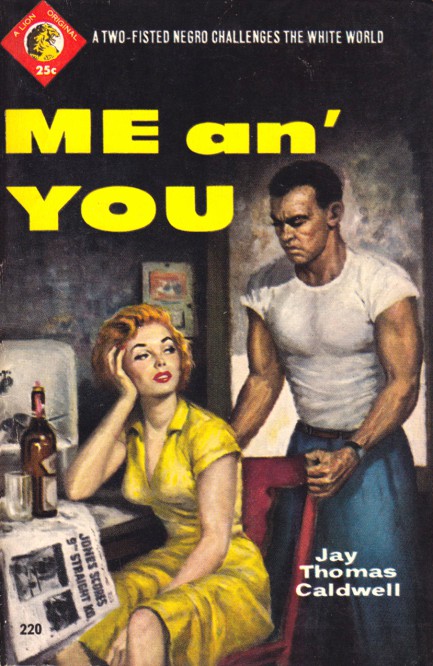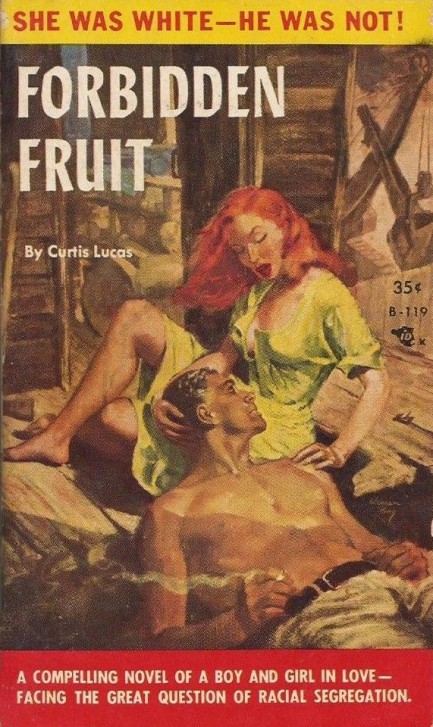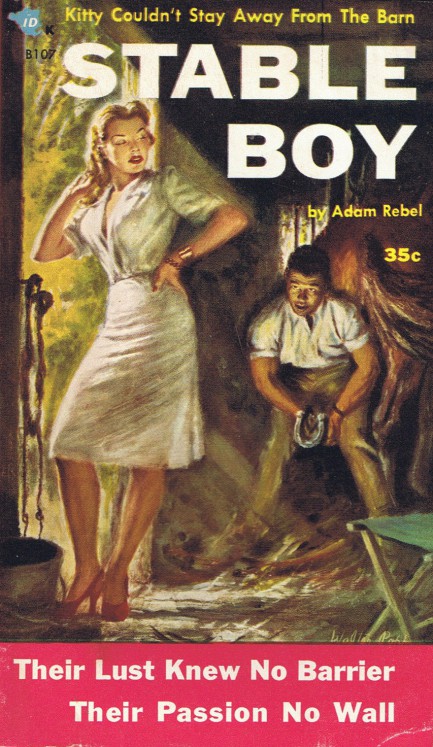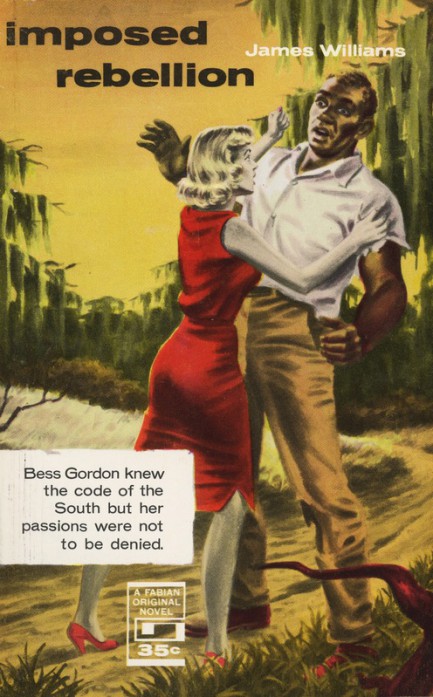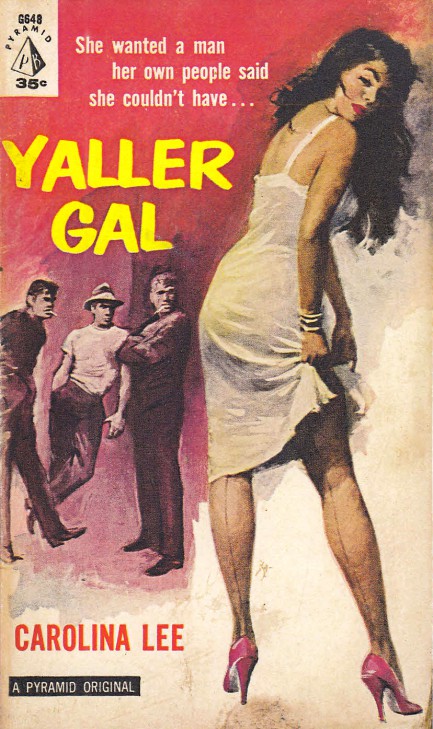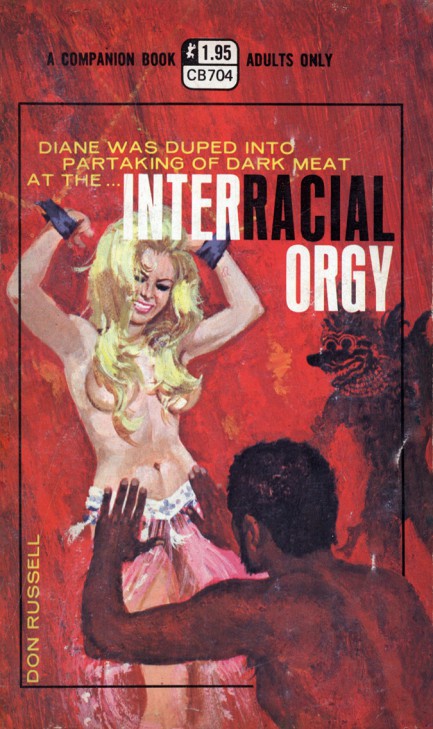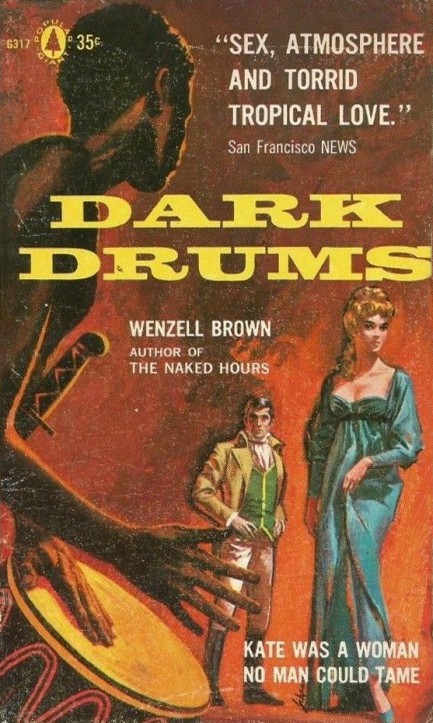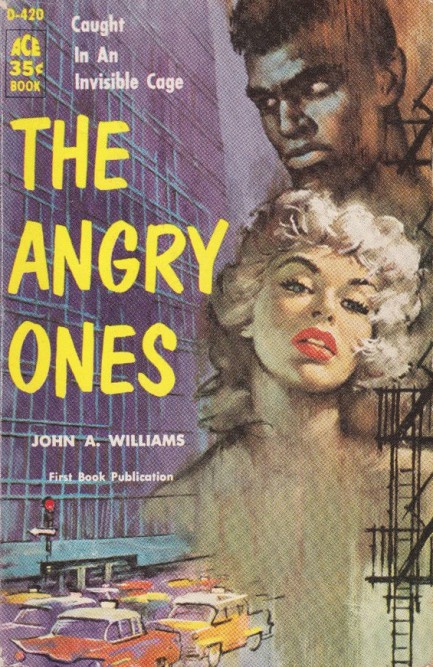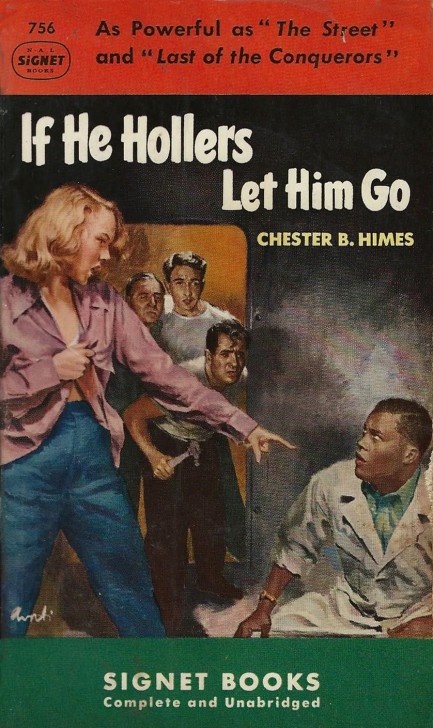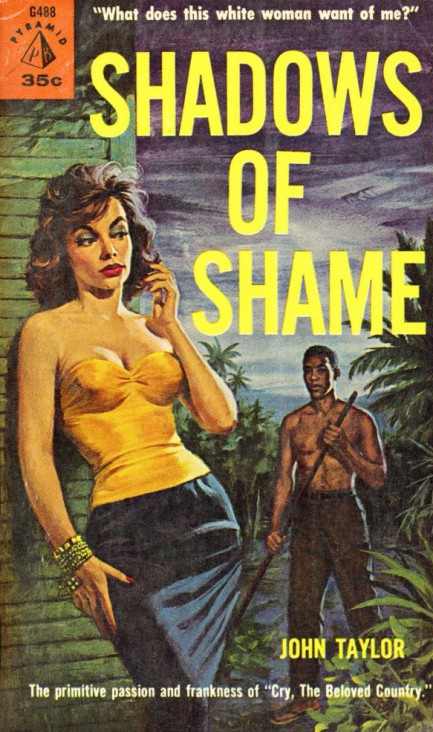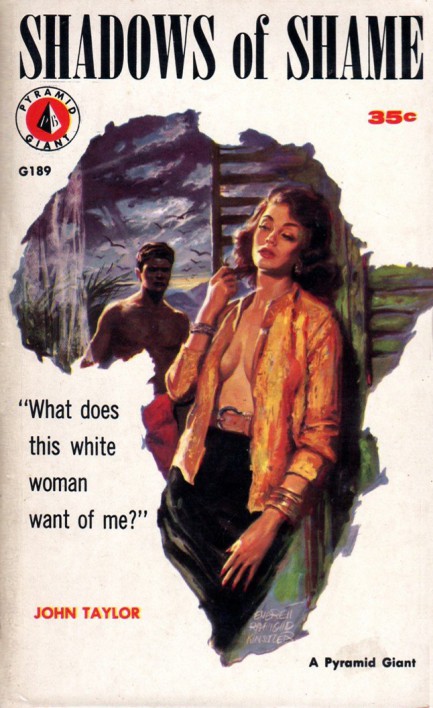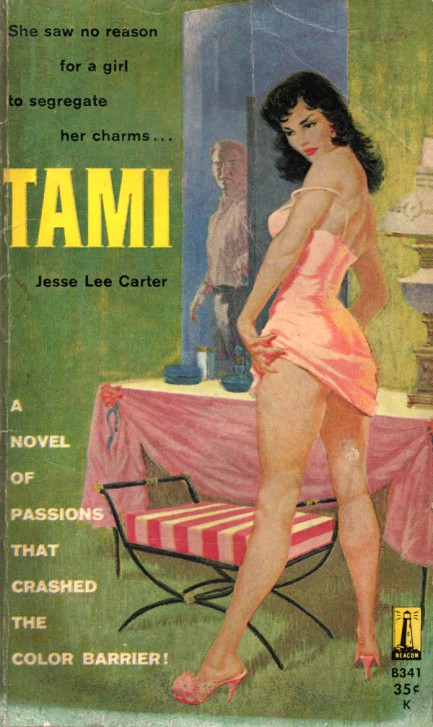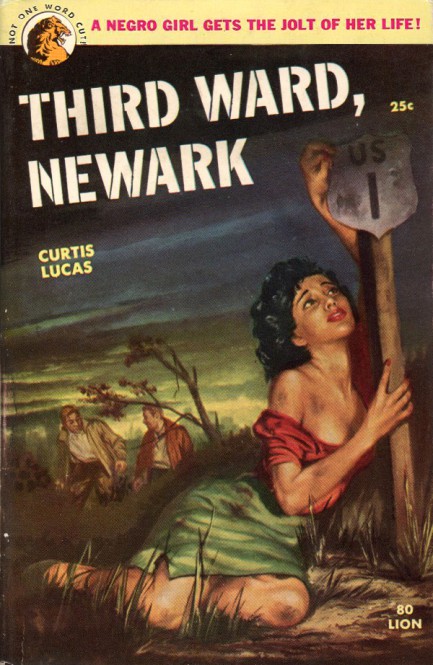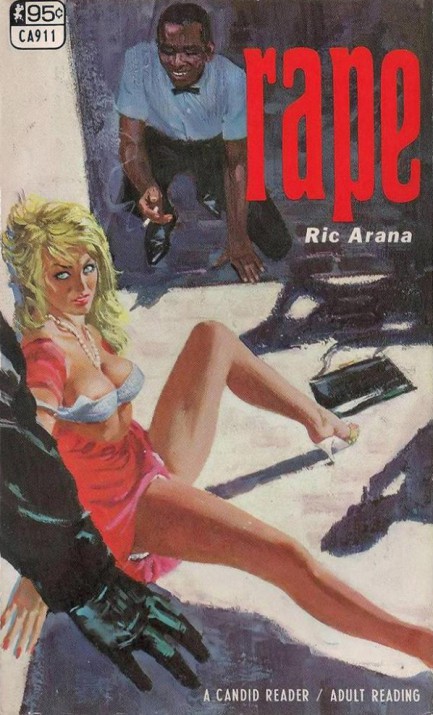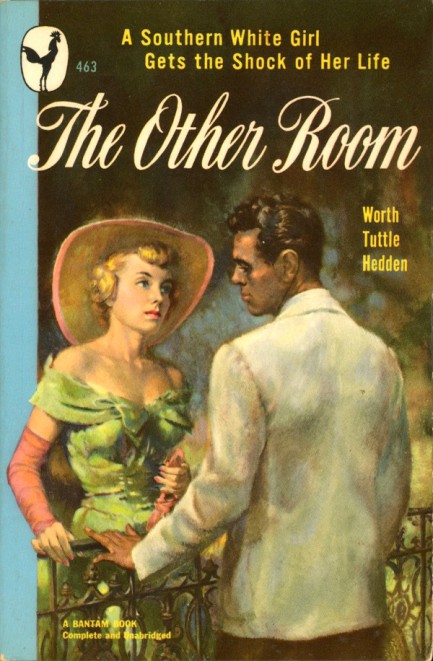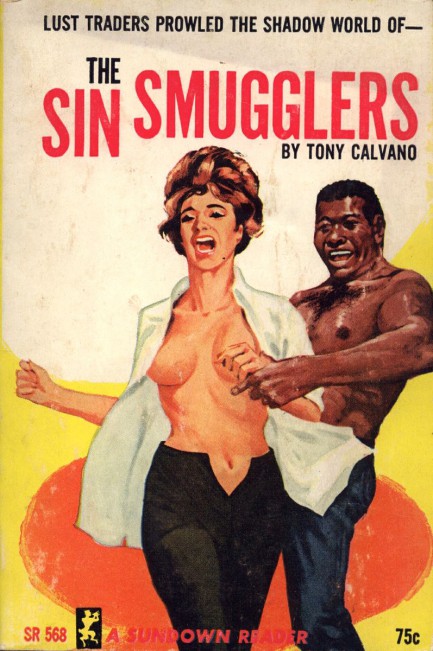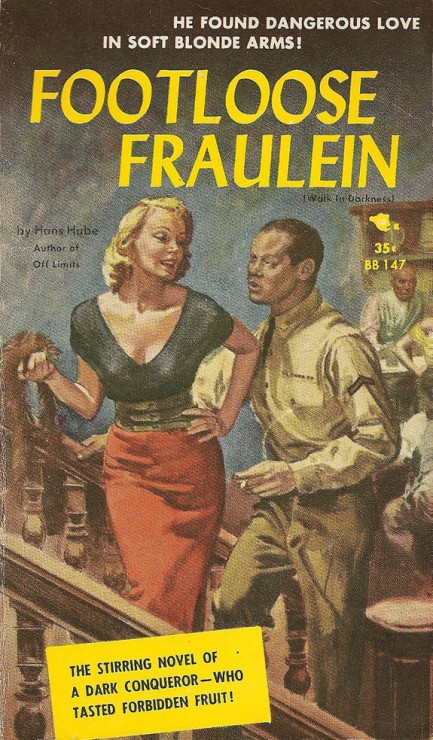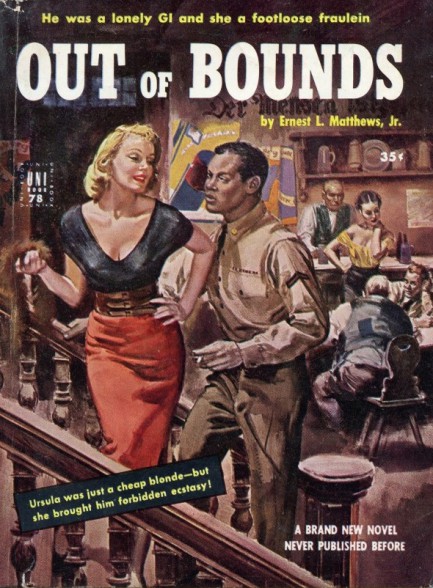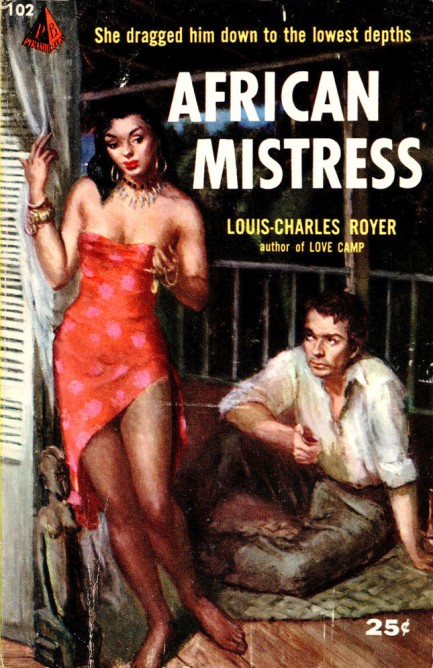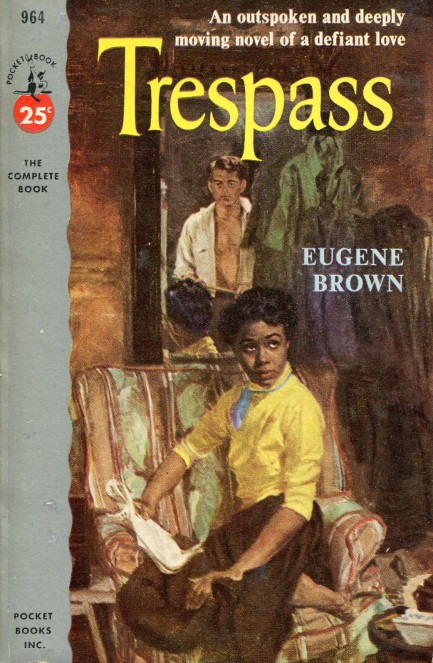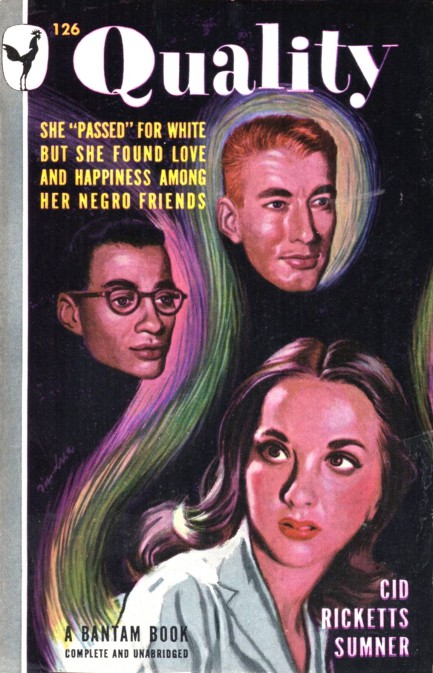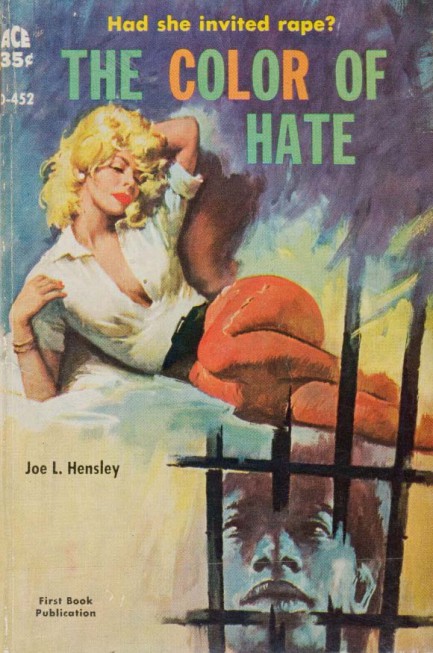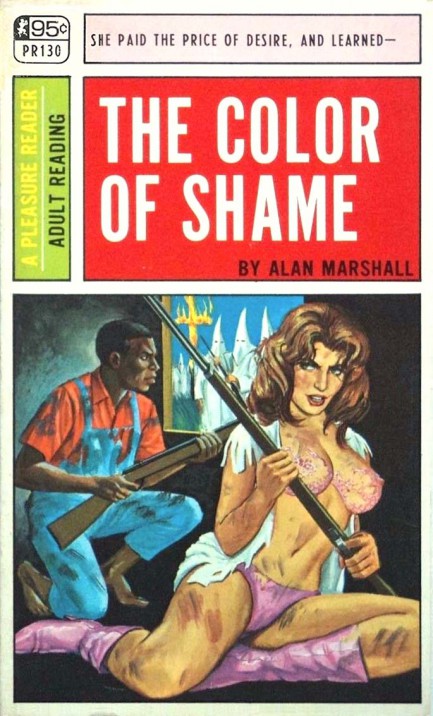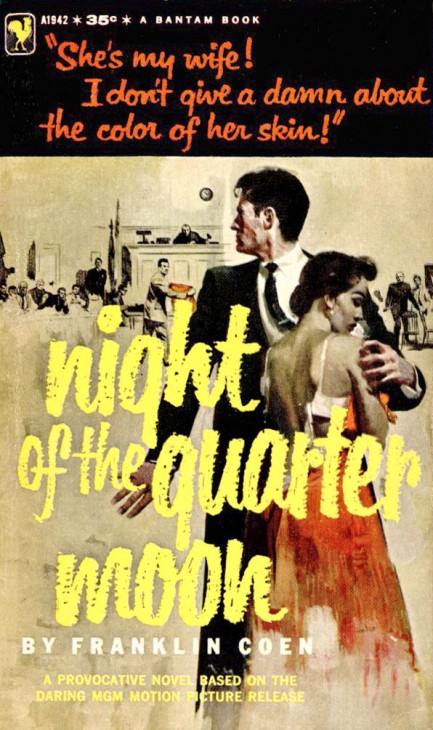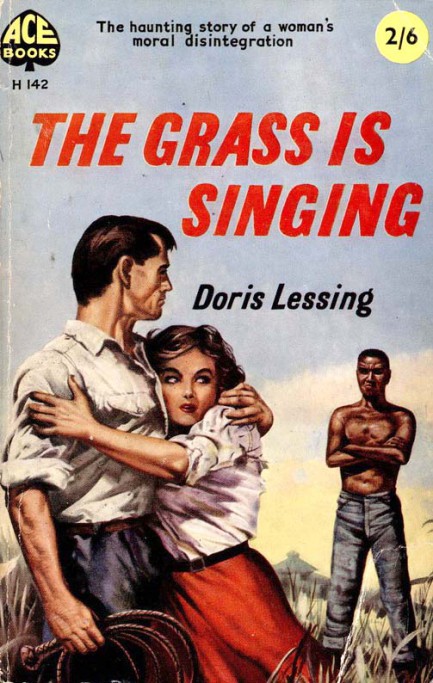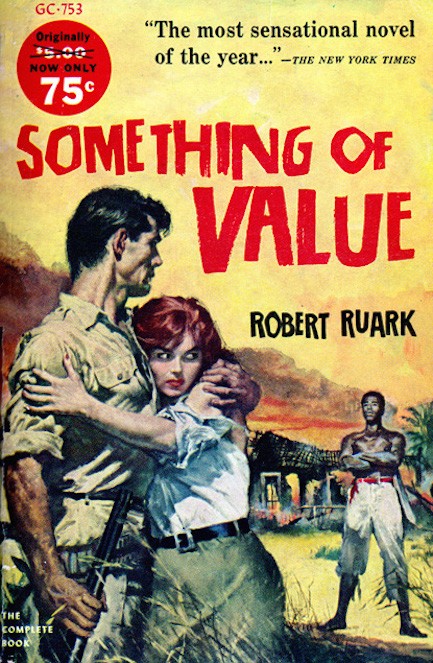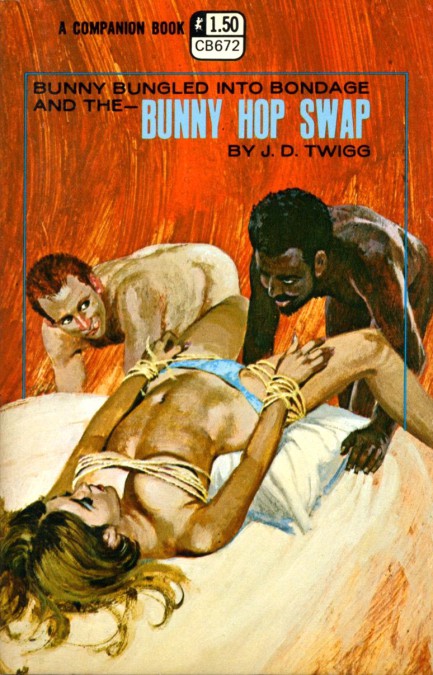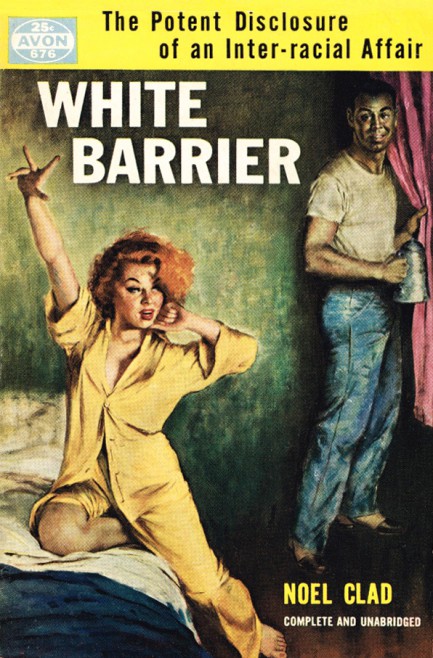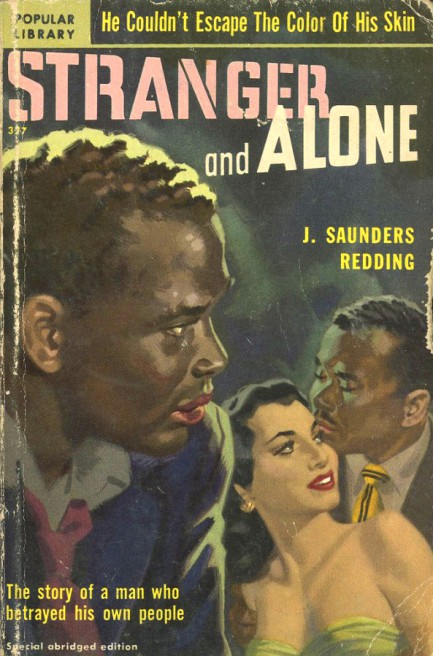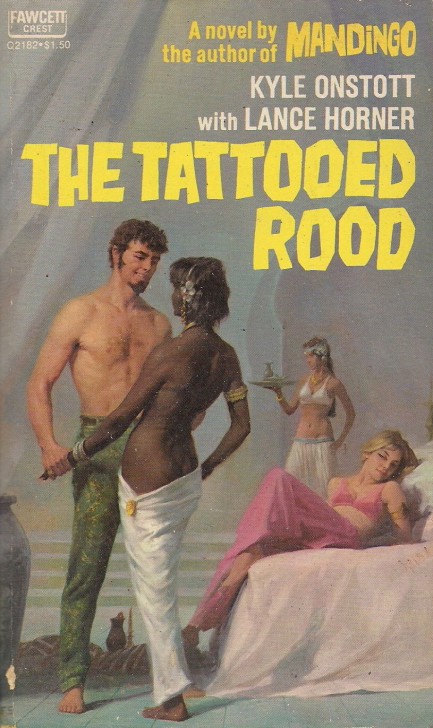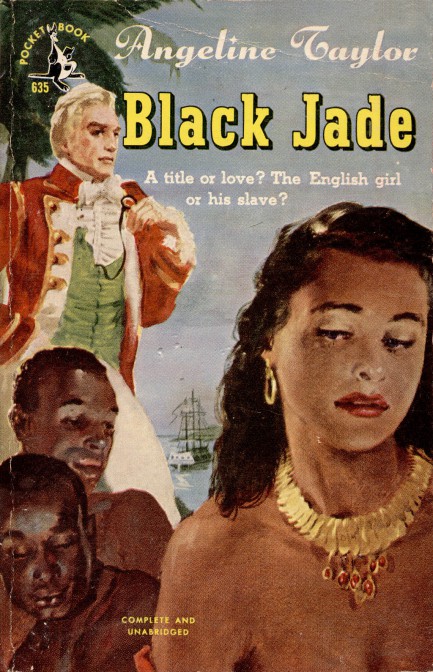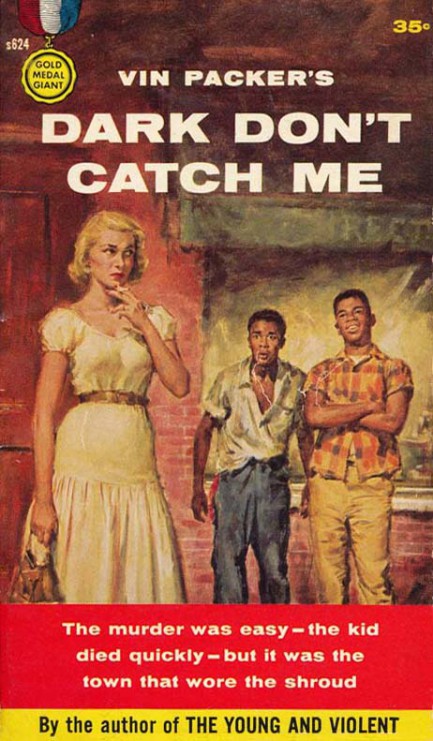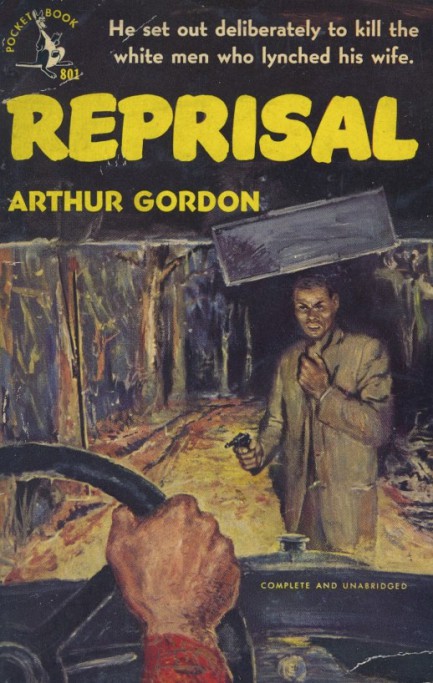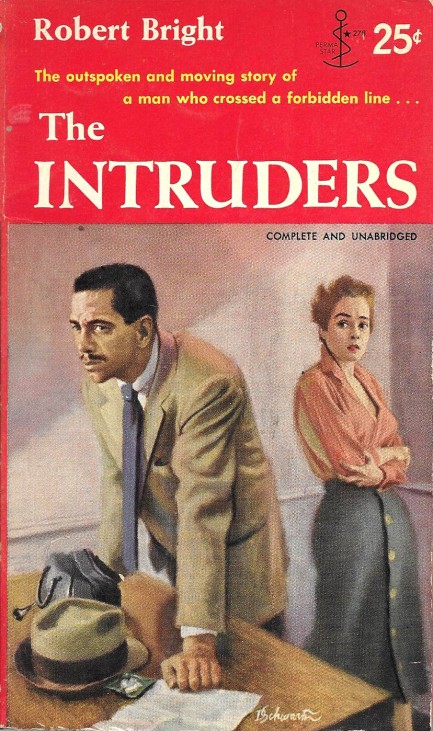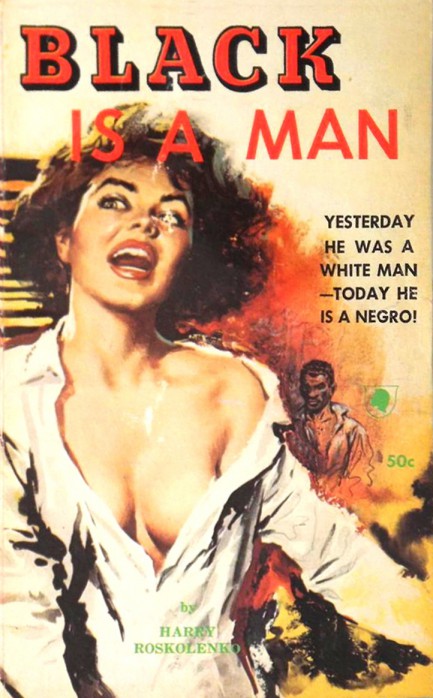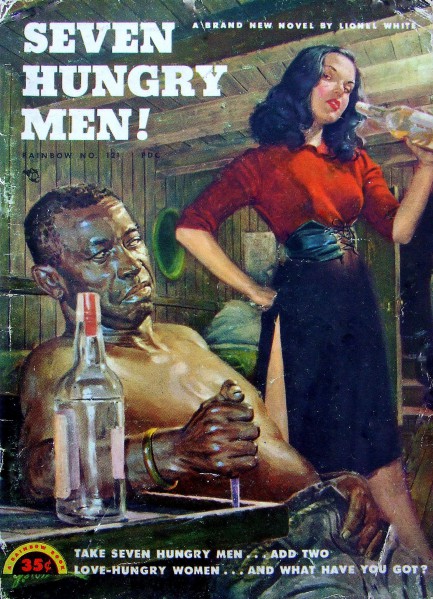| Modern Pulp | May 2 2024 |

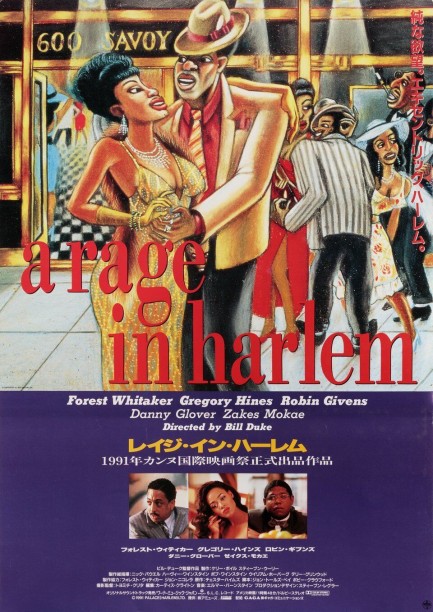
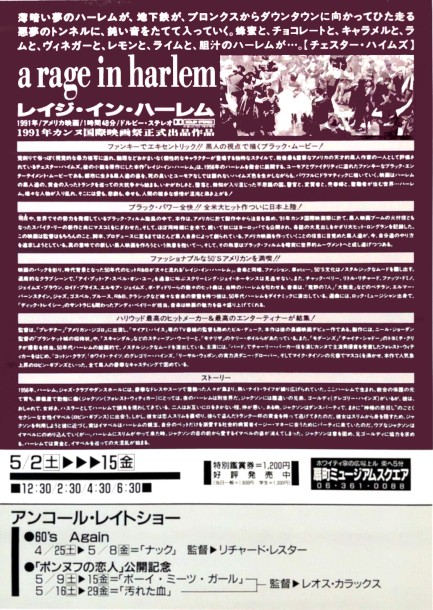
This Japanese poster for the 1990s period crime drama A Rage in Harlem happened to catch our eye, partly because the art by Joe Batchelor is great, but also because we knew the American promo featured not this painting but a rather banal group photo of the cast. We don't know why Japan got the better promo, but we can speculate. By this time global audiences were acclimated to photographic promo art, but in Japan the cast—Forest Whitaker, Robin Givens, and several established actors of the period—were unknown to local filmgoers, so the distributors marketed the movie as an art film, a sort of exotic trip to 1950s Harlem. The text on the poster's reverse seems to confirm that: 1956, Harlem. Jazz clubs, dancehall dresses, and people in suits, with a nightlife unfolding in a Harlem-style destination.
Chester Himes' novel For Love of Imabelle provided the source material, and it features everything the poster promises. The story deals with a naive and religious young Harlem undertaker played by Whitaker who's taken in by scam artists, tries to retrieve his money, but runs into an array of complications, some of them comical, most of them lethal. The movie follows the book pretty closely, which means it's bound to have good moments, but the direction by Bill Duke is a bit ponderous in the early stages, the script's many interjections of humor lack the zest of Himes' writing, the soundtrack is often a mismatch of mood, and the entire production suffers from budgetary constraints. It wasn't shot in New York City, but rather Cincinnati. While architecturally that made sense because Cincinnati has scores of brownstone houses in the style of old Harlem, there's really no substitute for the Big Apple.
On the plus side, the cast is interesting. Whitaker would later become a respected Hollywood figure, though here he's a little green, still feeling his way as an actor. Danny Glover, Bajda Djola, and Gregory Hines are entertaining in supporting roles. Givens fits the part of a femme fatale like a glove—which is to say, she's slinky as hell and startlingly beautiful. And turning back to the setting, while, as we said, Cincinnati is no Harlem, the many brownstone apartment houses did create a workable backdrop, and Duke uses the city in every advantageous manner he can manage. These are enough attractions, we think, to push the movie onto the plus side of the ledger. After its 1991 U.S. run A Rage in Harlem reached Japan in 1992. The rear of the poster gives a premiere date of May 2.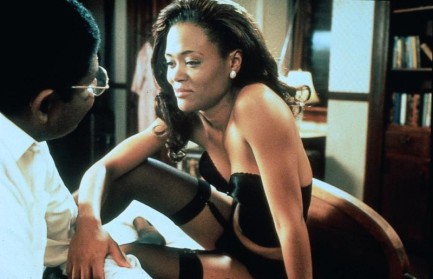
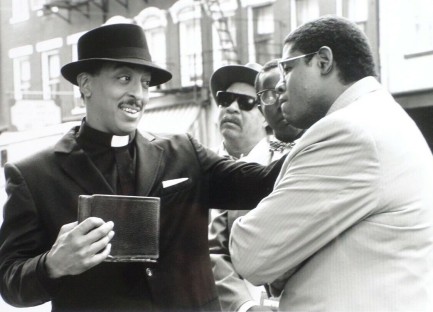
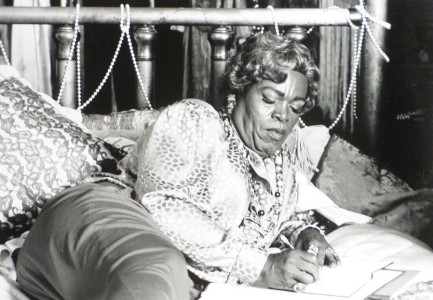
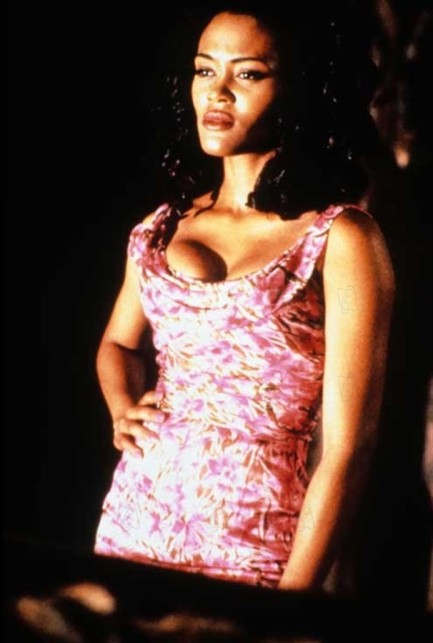
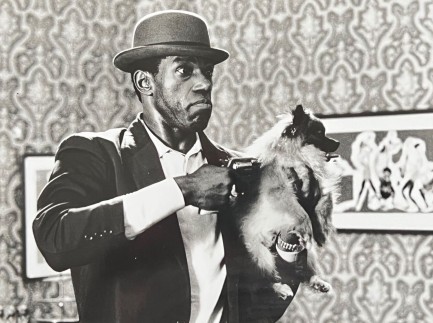
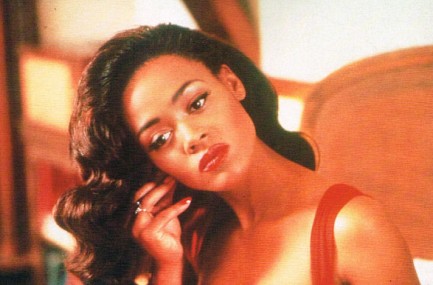
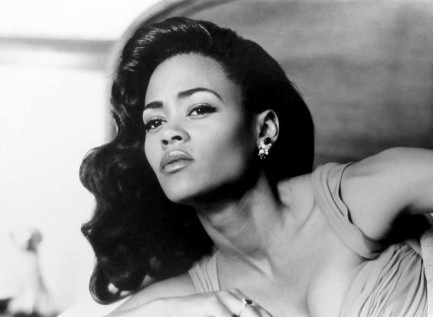
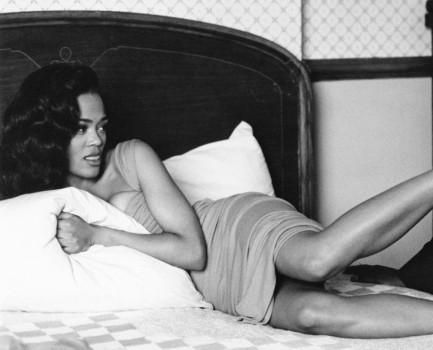
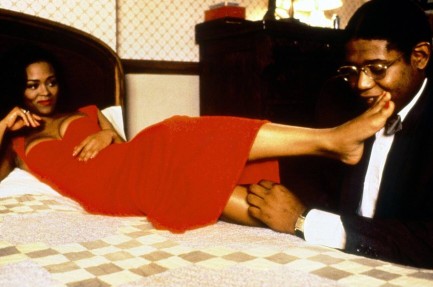
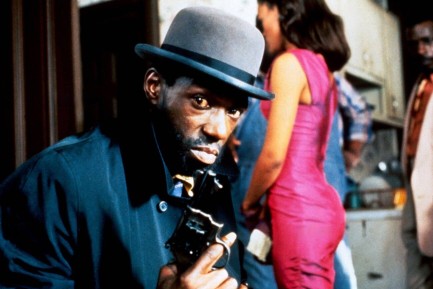
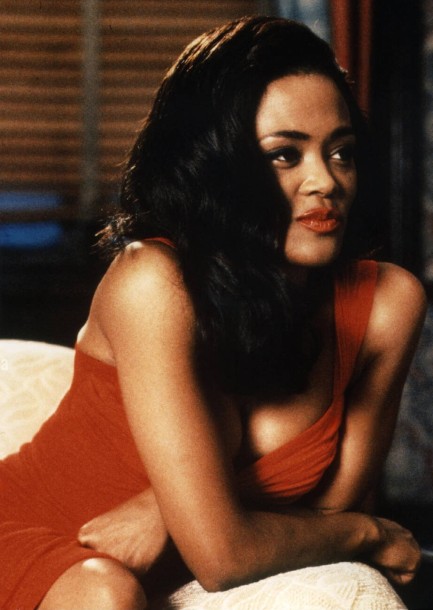
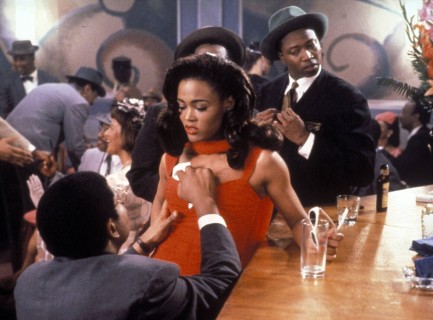
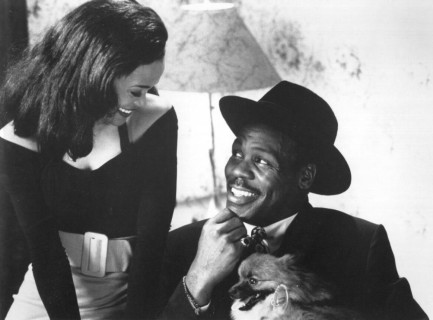
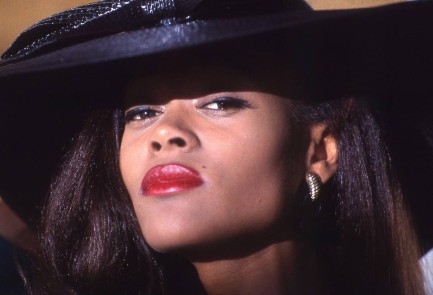
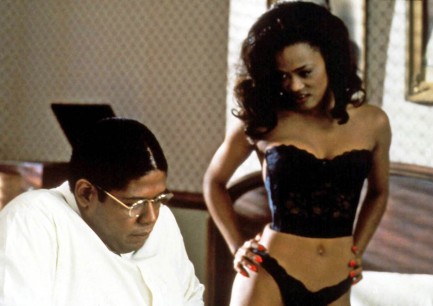
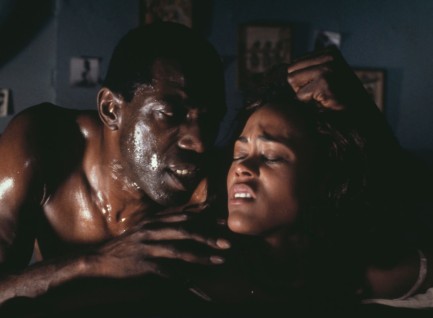
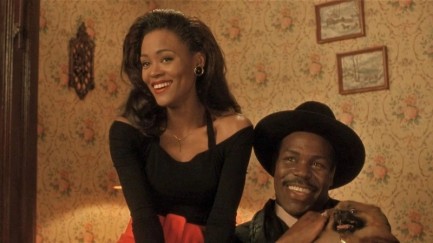
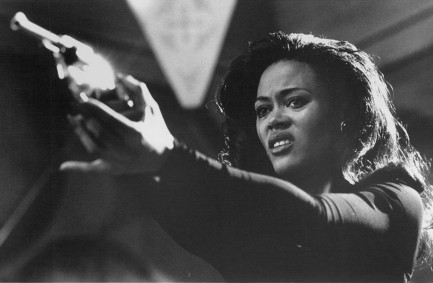
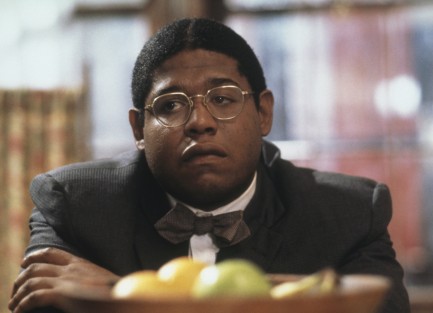
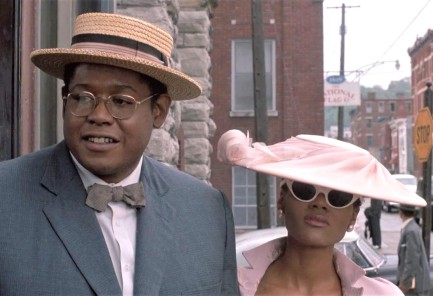
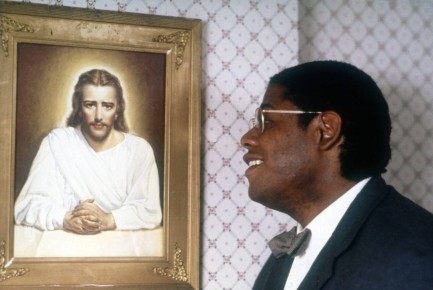
| Vintage Pulp | Nov 12 2023 |

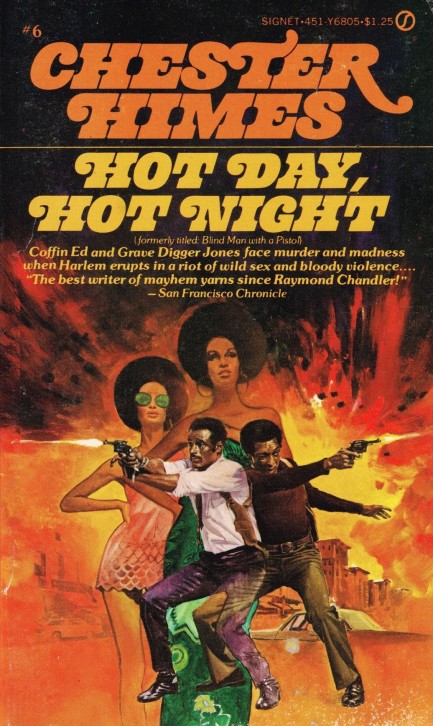
| Vintage Pulp | Jul 13 2023 |

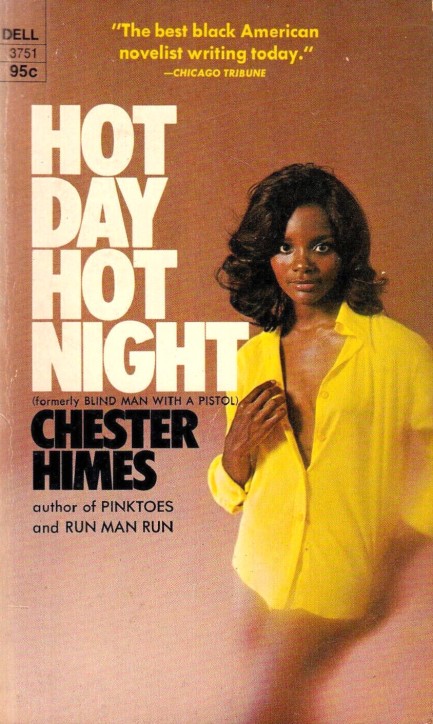
Legendary author Chester Himes originally published Hot Day Hot Night in 1969 as Blind Man with a Pistol, with this Dell photocover edition featuring a beautiful model coming in 1970. Those two years are about as far forward as we're willing to go when it comes to fiction for our website (we often read newer books, but don't write about them). Elmore Leonard and Stanley Ellin likewise have pushed the upper boundary of our vintage perimeter, so Himes, of course, has received an exception too.
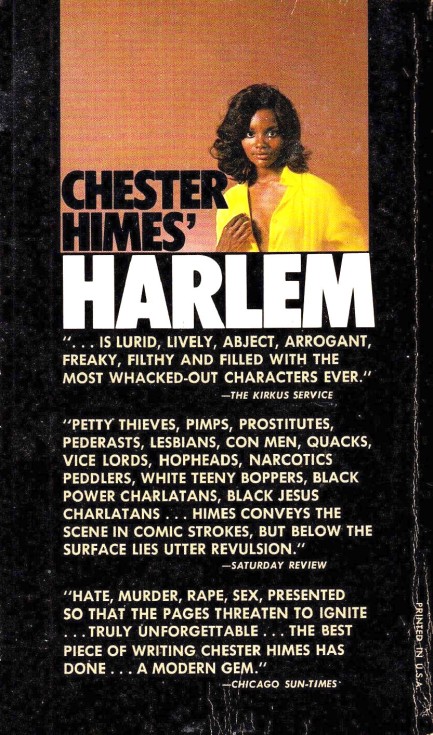
| Vintage Pulp | Jan 8 2020 |

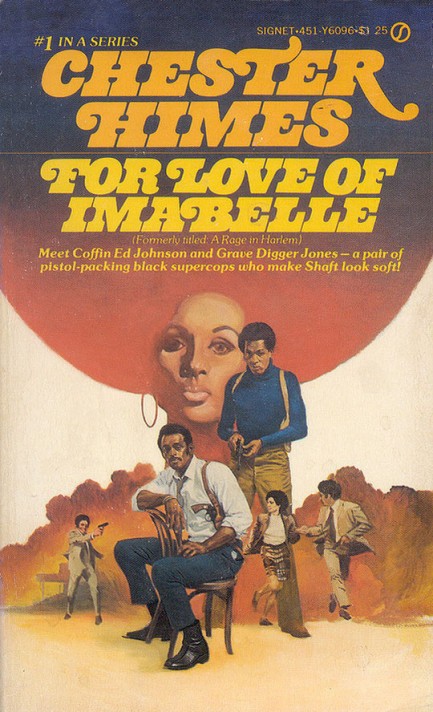
| Vintage Pulp | Jun 30 2019 |

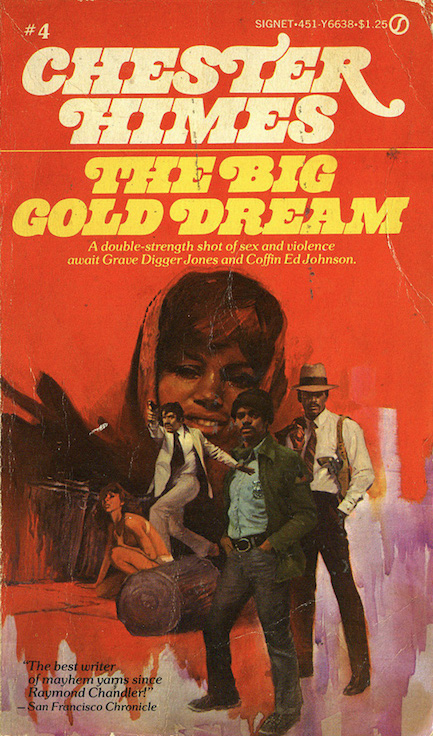
| Vintage Pulp | Feb 25 2018 |

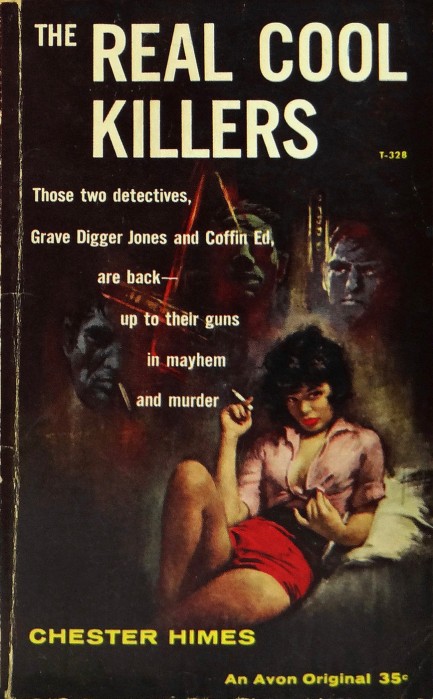
Himes' descriptive flair is unique, his sense of place is vivid, his use of language is a highwire act, and his characters are interesting. Even their names are often amazing—Ulysses Galen, Sugartit, Shiek, etc. The Real Cool Killers appeared in 1959, and as we noted when read The Crazy Kill, we're struck by the fact that—in that charged cultural era on the cusp of the Civil Rights Movement—Himes doesn't bother writing a single sympathetic black character aside from his two cops. But in this way he's no different than other hard-boiled crime writers.
Himes moved black characters to the center. They drive the action from all sides rather than are merely affected by it. Research shows that books, films, and television shows in which black characters drive rather than are affected by the action tend to be less popular with white Americans. Seen in that light, Himes' success is a tribute to a unique skill set. In the same way the murdered man in The Real Cool Killers gets his thrills going to Harlem, readers in 1959 were able to visit a world not their own in Himes' fiction. He's more than just a real cool writer. He's a pioneer.
| Vintage Pulp | Jan 25 2018 |

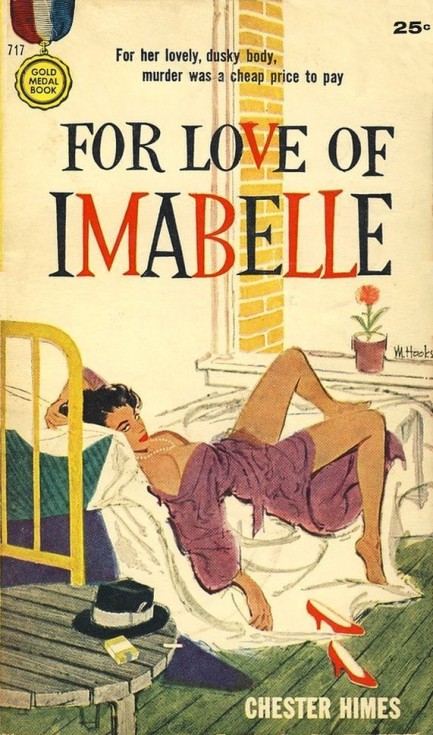
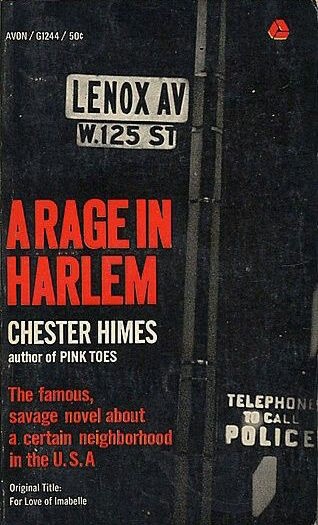 get the money back before Jackson's life is ruined, and whether our hapless hero's now missing girlfriend Imabelle is a fellow victim or a heartless participant in the scam. In Himes' hands everything unfolds with great style. Check this sentence:
get the money back before Jackson's life is ruined, and whether our hapless hero's now missing girlfriend Imabelle is a fellow victim or a heartless participant in the scam. In Himes' hands everything unfolds with great style. Check this sentence: Only a unique talent could pull off something so jazzy. We were less impressed with his third novel The Crazy Kill—which was the first of his books we read—but with his award winning Imabelle we've gone back to the beginning of his Harlem cycle and he's got us hooked now, especially since he's actually written a conventional good guy. In The Crazy Kill there are few legitimately sympathetic characters, but in this one you can really root for poor overmatched Jackson. Himes' franchise detectives Coffin Ed and Gravedigger Jones also play significant roles, and in fact Imabelle contains the defining moment of Coffin Ed's career. The story is topped off by a chaotic action movie style climax that's both thrilling and appalling. The Fawcett Gold Medal paperback at top appeared in 1957, and a later reissue as A Rage in Harlem came in 1965. And then there's the movie. Maybe we'll talk about that later.
| Vintage Pulp | Sep 27 2017 |

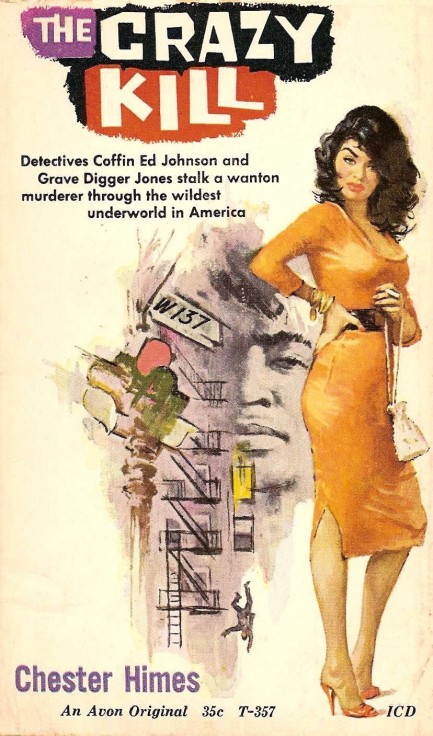
It turns out Ed is human after all, and from that point it was easier for us to be on his side. Though the writing has its flaws in our opinion, a central mystery that probably only Himes could have come up with kept us forging ahead: a preacher falls out of an apartment building window but lands in a bread basket, the type bakeries once used to deliver large orders. The preacher is fine and returns to the building, but somehow another man is found dead minutes later in the same bread basket. How he got there and why is utterly baffling. The Crazy Kill is weird, but fun and worth a read. In the meantime we may go back to the first Coffin Ed/Gravedigger Jones book For Love of Imabelle to see what these guys are all about.
| Vintage Pulp | Apr 21 2017 |

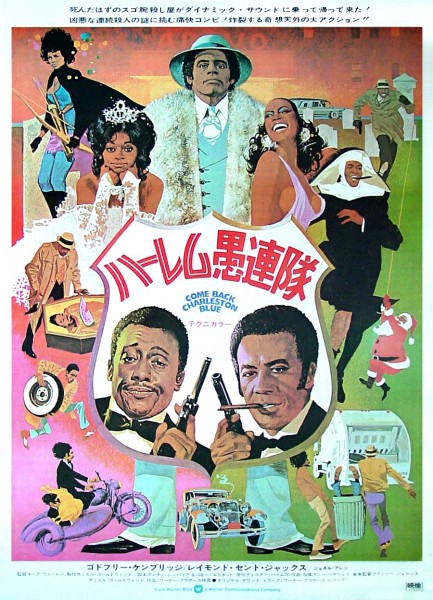
Above is a Japanese poster for the 1972 blaxploitation film Come Back Charleston Blue, starring Godfrey Cambridge and Raymond St. Jacques as the Harlem detectives Gravedigger Jones and Coffin Ed Johnson. It was the sequel to the highly successful Cotton Comes to Harlem. The plot deals with the return of a legendary vigilante named Charleston Blue, who killed with a blue steel straight razor and is believed by some to be responsible for a series of recent slayings aimed at the local drug trade. He's supposed to be dead, but his casket is empty and his collection of razors has gone missing. Is he really back from beyond? You'll have to watch the movie to find out. Reviews were mixed, but there are some thrills and laughs, there's good location filming around Harlem and environs pre-gentrification, and the soundtrack by Quincy Jones and Donny Hathaway is a nice bonus. All-in-all, a middling effort, but certainly not a waste of time. Come Back Charleston Blue first played in Japan today in 1973.
| Vintage Pulp | Nov 25 2015 |

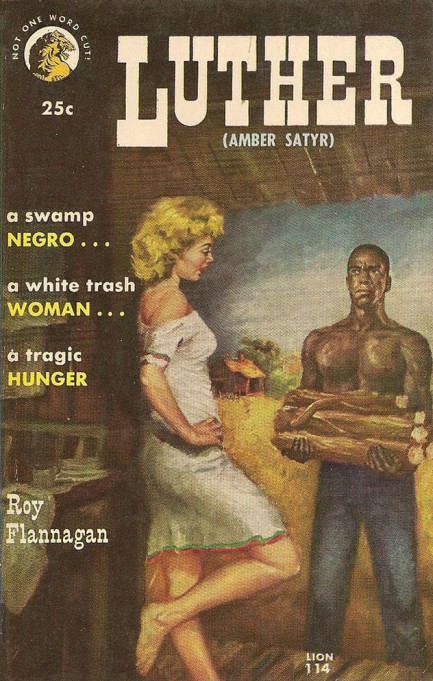
Science has given humanity a lot over the centuries. What will turn out to be one of its most important gifts is its conclusion, widely disseminated beginning in 1950 but by today firmly proven thanks to DNA sequencing, that race doesn’t exist in any scientific way. Of course, many don’t consider that fact a gift—but many people also had serious problems with the revelation that the Earth wasn’t flat. The concept of race comes entirely from the human imagination, and anti-black racism dates from within about the last five-hundred years, created principally as a means to justify the trans-Atlantic slave trade. Seen in that light, scientific proof that race doesn’t exist represents not new knowledge, but a return to knowledge that was the norm before the drive for riches caused men to deliberately warp human thought as a means to cover for mass cruelty.
As an imaginary construct, however, race is persistently powerful, which the collection of paperback fronts above and below strongly illustrate. We weren’t around when any of these were written, but their existence reveals a surprisingly (to us) lively market in such material. Were all the books you see here of great worth? Certainly not. But even with their flaws—particularly woman-blaming for rape—these books are artifacts of a fascinating racial dialogue that we suspect, on balance, was beneficial. We have fifty examples and there are at least a couple dozen more we didn’t include (Black Dicks for Marcie was just a bit too out there). Some of those pieces will pop up later in a slightly different themed collection. In addition to what you see here, we also put together a related group last year featuring an Asian theme and you can see that here.